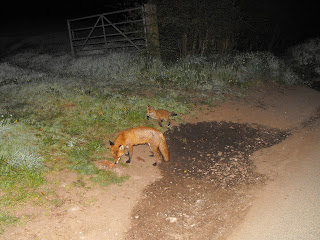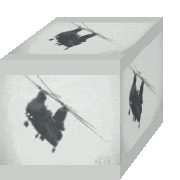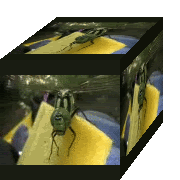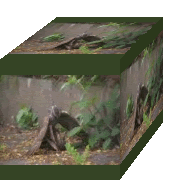 The arrival of spring has been a little hesitant this year, but the wild Daffodils in the woods heralds its undoubted presence. This is the time to go Silver Birch sap collecting.
The arrival of spring has been a little hesitant this year, but the wild Daffodils in the woods heralds its undoubted presence. This is the time to go Silver Birch sap collecting. You'll need a knife, a cup or bottle, and some string or possibly a bungee.
You'll need a knife, a cup or bottle, and some string or possibly a bungee.... Oh, and a Silver Birch tree.
First find a Birch twig, scrape the bark off, trim it to a point at one end and a flat at the other.
 Drive your knife in at 45% and make a clean cut about 1.5cm deep. Lift the blade ever so slightly to open the flap of bark but not so much as to tear the fibres.
Drive your knife in at 45% and make a clean cut about 1.5cm deep. Lift the blade ever so slightly to open the flap of bark but not so much as to tear the fibres. Immediately there should be a trickle of sap. Place the flat of your prepared stick into the slot, and encourage the sap to run down its length.
Immediately there should be a trickle of sap. Place the flat of your prepared stick into the slot, and encourage the sap to run down its length. Tie your cup to the tree and wait. It will take some time to fill depending on the tree and conditions. A large specimen near water will produce a lot of sap but is never quite as sweet.
Tie your cup to the tree and wait. It will take some time to fill depending on the tree and conditions. A large specimen near water will produce a lot of sap but is never quite as sweet. There always seems to be a trickle that escapes down the tree, and a second cup placed below a natural drip point can save waste. Bear in mind that if your are somewhere where animals might have urinated on the tree, then this is not a good idea!
There always seems to be a trickle that escapes down the tree, and a second cup placed below a natural drip point can save waste. Bear in mind that if your are somewhere where animals might have urinated on the tree, then this is not a good idea!When your cup is full then pull out the stick and firmly press the flap of bark shut and hold it for a minute or two. You won't stop the flow entirely, but sufficiently to allow the tree to heal itself.
You can drink the sap fresh (the earlier in the season, the sweeter it is), use it for tea, drinks, or carefully heat it in a pan (don't boil it) to reduce to a syrup. It'll keep for a couple of days in the fridge, and is freezable, but is best drunk straight from your collecting cup... Cheers!
 It's been over a year since I first met this little fox, just a tiny fox cub playing on the road. Now fully grown we've learnt to trust each other. I visit every night and we've become friends. She'll sit by my feet, untie my shoelaces, pinch my hat, jump onto the bonnet of my car, and take food so very gently from my hand.
It's been over a year since I first met this little fox, just a tiny fox cub playing on the road. Now fully grown we've learnt to trust each other. I visit every night and we've become friends. She'll sit by my feet, untie my shoelaces, pinch my hat, jump onto the bonnet of my car, and take food so very gently from my hand.  I'm even trusted not to steal the skillfully hunted shrews carefully laid down side by side for a special occasion.
I'm even trusted not to steal the skillfully hunted shrews carefully laid down side by side for a special occasion.  With a distinctive whimpering sound, she called one of the cubs out, encouraging it to investigate the couple of shrews at my feet. I felt honoured to be introduced.
With a distinctive whimpering sound, she called one of the cubs out, encouraging it to investigate the couple of shrews at my feet. I felt honoured to be introduced. Nervous at first, a bit of food laid out on the usual 'feeding rock' soon had it bounding around with confidence.
Nervous at first, a bit of food laid out on the usual 'feeding rock' soon had it bounding around with confidence. Mom was obviously really hungry and was keen to eat in peace for at least a little while. The cub kept its distance fearing a disapproving bark.
Mom was obviously really hungry and was keen to eat in peace for at least a little while. The cub kept its distance fearing a disapproving bark.














